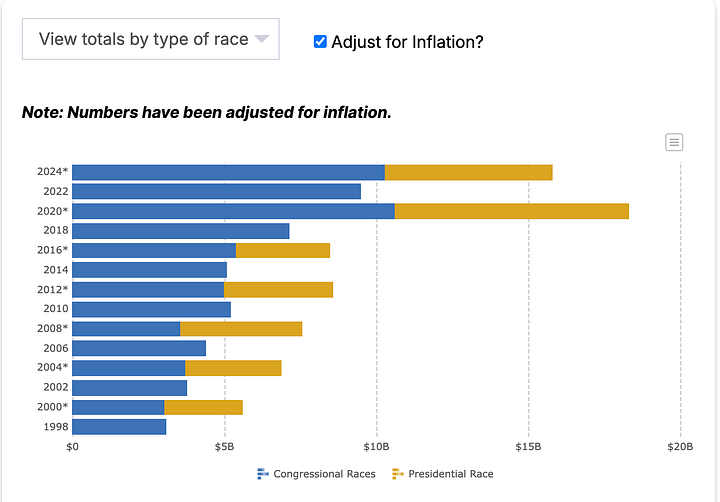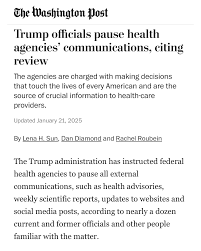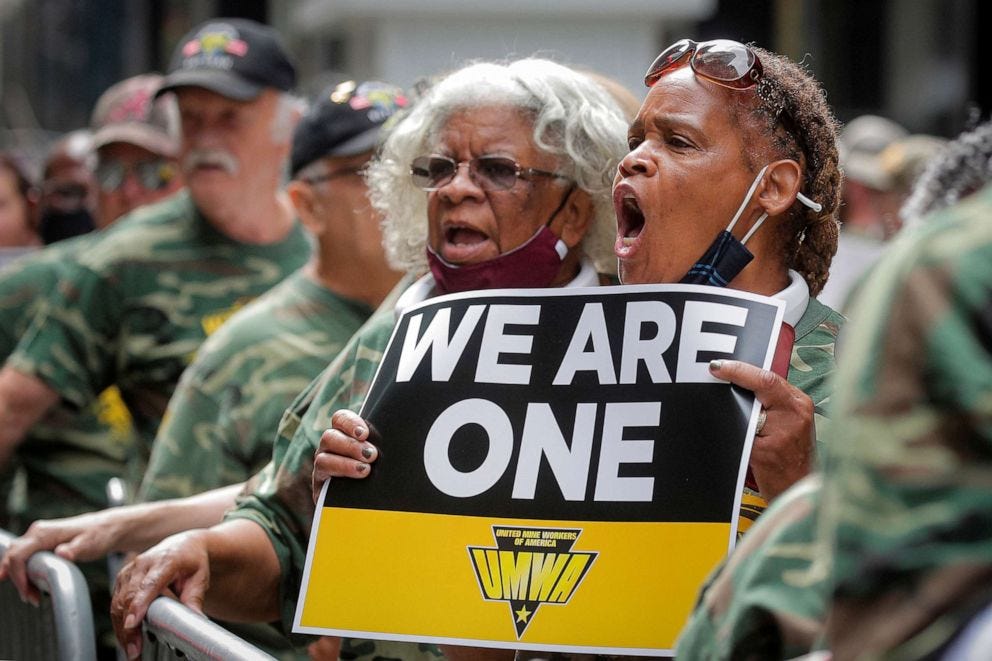Fascism: The Issues & How We Get Out of It
Derailing the train toward fascism, will spill the blood of the innocent.
We had our chances. We saw the signs—the rallies, the rhetoric, the posturing. But we failed to act. Now, fascism isn’t just a threat; it’s a reality.
The question is no longer “how we got here” but “how we fight back.”
Part 1: Silence is Consent
The Democratic Party’s failures and inaction.
Part 2: The Two-Party Trap
The role of money in politics.
The illusion of choice and the need for grassroots movements.
Part 3: How to Fight Back
Grassroots organizing and economic resistance.
The path forward: non-violent vs. violent resistance.
It wasn’t enough of a warning, millions of voters abstained, while others voted in protest. The protest vote was entirely dedicated to “show us”, emphasizing that there are different options. Indeed, there are. And each option came with a long list of consequences.
Yet, still, we are collectively avoiding the full implications of our failure to appear in its alarming clarity.
Our discourse continues to be shaped by coded language, illusions, and impotent hopes, that somehow events will straighten themselves out.
They won’t. Fascism is the track of the railway that will lead to genocide. Again.
Name it. Call it out for what it is. Refuse to mask your language.
It’s not “schmatzis” or “schmitler”.
They are Nazis. Their idol is Hitler.
And indeed, there is only one final solution.
Part 1: Silence is Consent
The Democratic Party is mostly absent. Besides the occasional blip of verbal rejection, the majority is falling in line, and through their inaction, perpetuates the laying of the tracks of fascism.
Why the Democratic Party is very quiet
One speculative explanation for the Democratic Party’s muted stance is that it lacks a unified, galvanizing message and strategy. After decades of incremental policymaking and internal divisions, the party finds itself overstretched on issues ranging from healthcare to climate change to voting rights. Competing priorities, and egos too big to concede to the collective. Consequently, democrats, politicians, and voters alike are pulled in multiple directions, resulting in a muddled message, inconsistent public presence, and ineffective strategies.Moreover, the apparent political “quiet” is also be a function of internal calculations: career politicians believe that speaking out forcefully could risk alienating centrist or swing voters, so they bank on subdued rhetoric and incrementalism instead of confrontational tactics.
Democrats are ineffective, mostly silent, and refuse active opposition
Democrats suffer from their self-imposed rules, inadequate decency, and playing by an outdated set of decorum. Meanwhile, Republicans run roughshod over established norms, and ethics, and have become the abuser in an already dysfunctional relationship.Institutional inertia and reliance on precedent: Democrats may be holding onto the idea that “the system will correct itself,” believing that traditional checks and balances, such as the courts, the media, and public opinion, will prevail against the republican machinery. The Democrat’s apprehension results in the failure to disrupt norms, turning them into paper tigers, rather than formidable forces of constituency representation.
Fear of backlash and loss of donor support: Democratic officials rely on funding sources that prefer “business as usual.” Loud and forceful opposition to fascist or autocratic policies will threaten donor relationships, future election prospects, and personal political capital. By minimizing confrontation, career politicians avoid provoking powerful interests or media narratives that will undermine their reelection chances. After all, once you’re elected, the power drip, adjacent to incumbent tenure, becomes a potent drug.
Speak Up or Shut Up: What Democrats have to lose
Electoral Vulnerability: Democratic politicians in swing districts or states worry they could lose the undecided, independent, or moderate Republican votes if they take an outspoken stance. Their silence is a protective measure to avoid alienating constituencies that might see strong anti-fascist rhetoric as too extreme.
Donor Support and Party Standing: Politics is a participation sport, wearing a uniform decked out in sponsorships, would alleviate the question of “who bought them”. On a more serious note, politicians depend on large
donorsinvestors who prefer stability and moderate language. Aggressively opposing authoritarian trends will jeopardize financial backing, asdonorsinvestors typically seek to maintain influence in a system that remains predictable.Institutional Clout: Vocal opposition will result in losing committee assignments or leadership roles if party leadership opts to sideline outspoken members to maintain party unity. Staying quiet helps preserve their influence within the existing power structures.
Part 2 - The Two-Party System
The voter accepts the common position that the United States harbors a two-party system, and there are no other choices. This, to no surprise, is only partially correct.
The United States is home to 15 parties. From the establishment parties, to obscure fringe parties.
Considering the options, surely, there must be an opportunity to vote for a different party, outside the establishment, ensuring that we arrive at diversity in representation, forcing coalitions, rather than two-party arrangements behind closed doors.
Money is the Root of Political Evil
Running for office is not for the fiscally faint of heart. Depending on the office you contemplate running for, the state in which you live, and how many opponents you have to overcome, the amount of money you need to raise varies.
However, from a 10,000 ft perspective, the amount of money it takes, is nothing short of eyewatering. Learn more about the “Cost to run” at OpenSecrets.org


Latest when we apply the financial needs to adequately contend for office, the majority of Americans are priced out of public representation. Thus, politics is the game of the well-connected and the well-funded. Certainly, some exceptions apply, but they are not the norm.
In sum (pun intended), with “regular” Americans unable to compete, a new party structure, statistically relevant 3rd party option, and diversity in political representation is a dream that we will be unable to fulfill. In fact, the longer we hold on to the dream, the more it will become a nightmare.
Part 3 - How To Get Out of Fascism
Speculation on what might get the U.S. out of fascism and back into a true democracy
Grassroots Political Movements: History shows that fundamental change emerges from organized grassroots efforts. These movements can create widespread awareness, mobilize voter turnout, and pressure elected officials to enact democratic safeguards. Bernie Bros - Rejoice!
Independent Institutions and Legal Challenges: If courts, local governments, or federal agencies remain even partially independent, they can serve as bulwarks against anti-democratic policies. Successful legal challenges may roll back or diminish the impact of autocratic measures. We may witness the Democratic Governors Association (DGA) become a formidable ally in pushing back against GOP Fascism. Moreover, the Democratic Attorney Generals Association will hopefully bury the Trump regime in neverending legal battles. Lastly, countless legal nonprofits, collaborating and resource sharing, will turn out to be the “pesky” fly that the Nazi’s elephant cannot squash.
Economic Realities and Public Demand: Unfortunately, the tug of war is already noticeable. The grip of fascism tightens, and the US has begun its isolation from the rest of the world, while also limiting domestic communication between governmental departments and the American public.
Moreover, imposing tariffs unto economic partner nations, will not burden the country, nor the manufacturers, but stress the already broke American consumer. The only functional opportunity for Americans is to collaborate, share resources, buy locally, and reject the manufactured condition of American consumerism. Bankrupt American mega-corporations and its shareholders.
How we might go about this without the aid of allied forces
Unlike the European experience in World War II, the U.S. will not be rescued through external military intervention.We are, as a country, an impenetrable fortress, with the most powerful military to protect land, water, and air. On the off-chance that an allied armada would attempt to liberate us, our military forces are already stationed inside or close to their countries. Before they get to us, we would wreak havoc in their own countries, effectively focusing them on domestic damage control, as opposed to liberating Americans.
Therefore, the fight against domestic authoritarianism will need to take a different shape:
State and Municipal Resistance: States or cities must refuse to enforce federal policies deemed unconstitutional or blatantly fascist. In effect, localized “sanctuaries” will preserve pockets of democracy that later expand nationwide.
However, legal defenses will be insufficient in the long run. Any Executive Order that does not get implemented, will be followed with a Resolution, to be voted into law. From there, Republicans will pass legislation, with the intent to drive adverse decisions to a Trump-committed Supreme Court of the United States.
Thus, in the long run, the legal avenue to maintain democracy is moot.
Grassroots Organizing and Networks: Activist networks, civil society coalitions, and local community groups must coordinate efforts to resist and circumvent autocratic mandates. Whether through mass protests, mutual aid, and civic engagement, we must show up in millions, and stay on the streets until our power has been established. Meanwhile, community resource sharing will be paramount.
Building Parallel Institutions: Communities must start forming parallel structures: from independent media to community defense groups, and local cooperatives. Maintaining democratic values outside the official channels of power is the antidote to national fascism.
There are only 2 paths that unite Americans to end fascism
Non-Violent Paths
Mass Civic Mobilization: A major trigger could be a nationally televised incident of government overreach, such as a blatant violation of civil liberties or a violent crackdown on peaceful protesters. Unfortunately, it will need to be larger than the protests in the wake of George Floyd’s murder, or the campus protests in support of Gaza.
Widespread outrage might unify diverse groups (centrists, progressives, and even moderate conservatives) around the need to restore democratic norms, rejecting the authoritarian government. However, there will be a cost associated with such unity, as no fascist government has ever given up silently. They will murder their own, just to remain in power.
Workers’ General Strike: Should draconian policies continue to undermine labor rights, workers across industries must engage in a coordinated strike. A large-scale work stoppage can force politicians to address demands for a democratic process and socio-economic reforms. These strikes must be adhered to by millions of Americans, who in unison, grind the country to a screeching halt. Collaboration with community resource groups will keep us nourished, medically supported, and informed. In the event of a nationwide protest, we will have one opportunity to “get it right”. The regime will not tolerate another attempt after they understand the potential power of the first attempt.
Potential for Violent Flashpoints
Militia Clashes or Armed Uprisings: If government policies escalate into direct militarized enforcement, e.g., the widespread rounding up of dissidents, heavily armed factions might respond in force. Americans are among the most armed humans on the planet. However, this scenario poses a duality of risk: 1) the inevitable clash with regime supporters and believers of fascism, and 2) the US military, which will answer to the coup, with marching orders by Trump and Hegseth. However, when we have reached our breaking point, resulting in a point of no return, death may be preferable to indentured servitude.
Localized Insurgencies: In extreme cases, certain regions might openly defy federal authority, leading to regional insurrections. The danger lies in fracturing the nation further, creating long-term instability rather than a unified democratic revival. The more isolated and regional the insurgency, the easier it is for state and federal governments to squash any attempt to reestablish democracy. However, if community resources, including communications resources, have been established, the blatant overreach of the regime, may result in an avalanche of local resistances, which may turn the armed rejection into a nationwide phenomenon.
Ultimately, the path back from fascism will rely on the American people’s ability to rally around shared democratic values. Whether that takes the form of peaceful mass mobilization, strategic legal battles, local sanctuary movements, or, in the worst case, armed resistance, civil war, and an unfathomable number of dead Americans - well, that remains speculative.
The crucial factor is whether enough Americans recognize the threat and commit themselves to resisting it, using every available non-violent tool before we reach into our gun safes.
###
~Z.














…fascism is not an ideology, it’s the way to take and hold power, we have a regime with dictator in power with christian NAZI writing laws
May need to get a set of wax seals for our written communications when the time comes.